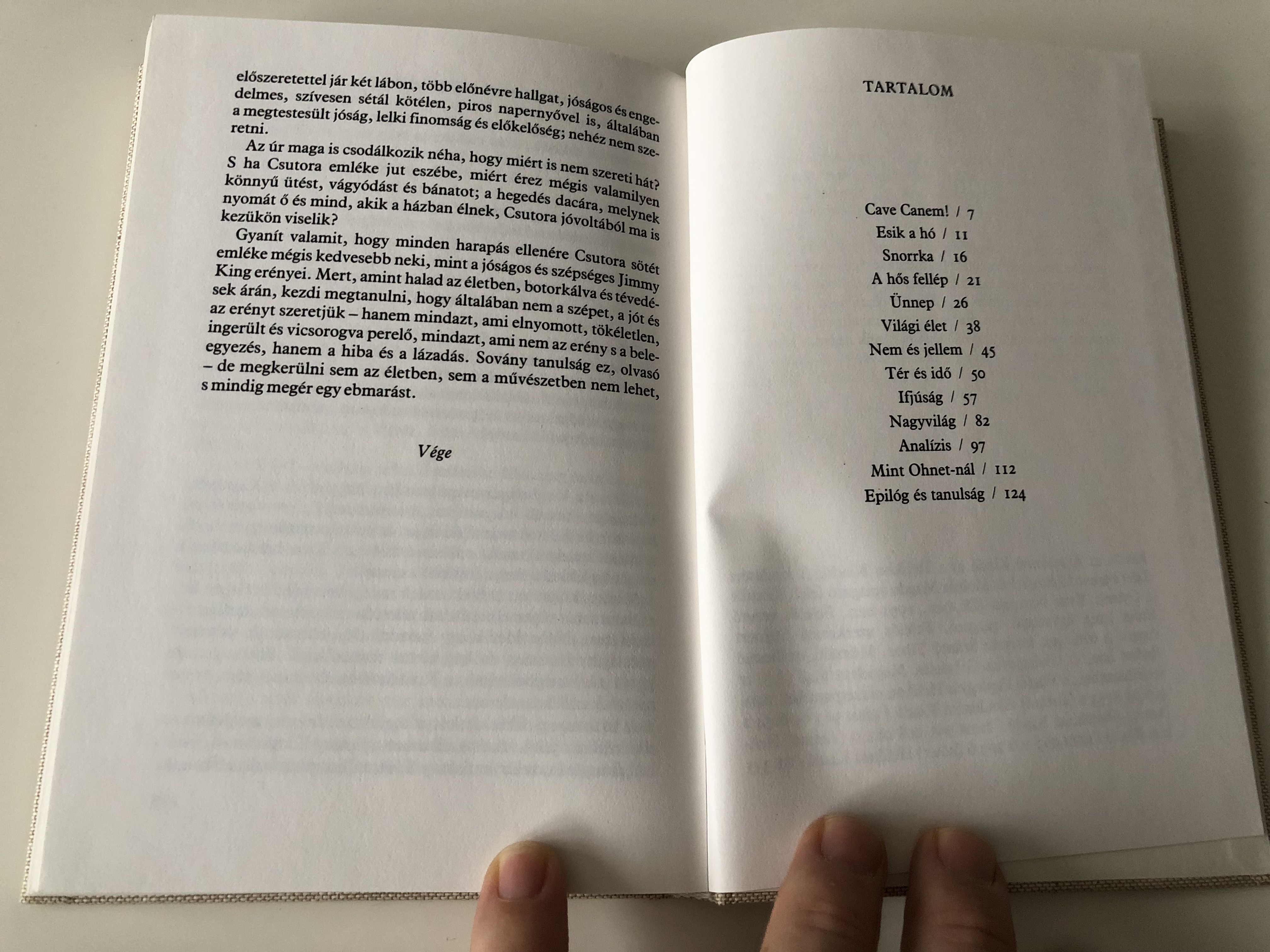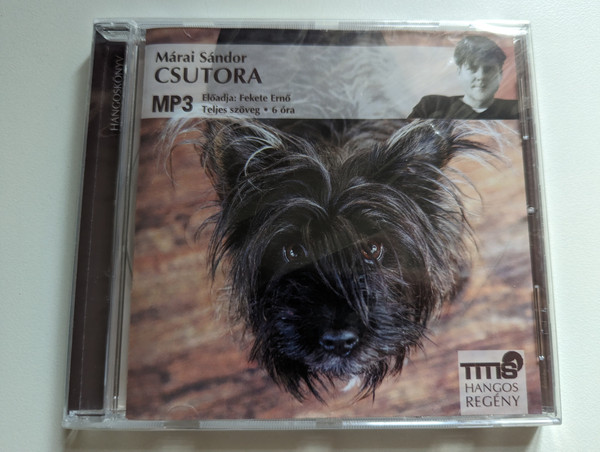Description
"Csutora by Márai Sándor – A Whimsical Tale of a Mischievous Dog and Human Folly | Hungarian Literary Classic"
Product Information
UPC: 9789630560542 / 9630560542
Product Type: Paperback (Unknown Binding)
Language: Hungarian
Genre: Fiction / Animal Story / Satire
Series: Márai Sándor művei
Pages: 125
Dimensions: 7.1 x 5.1 x 0.7 inches
Publisher: Helikon (1991)
Original Publication: 1932 (Révai edition)
ISBN-10: 9630560542
ISBN-13: 978-9630560542
Overview
"Csutora" is Márai Sándor’s (1900–1989) delightfully subversive novella about a scrappy mixed-breed puppy who upends the lives of a bourgeois Hungarian household. Purchased as a last-minute Christmas gift, the "puli-like" Csutora chews through furniture, books (including H.G. Wells), and social pretenses, revealing the absurdities of human nature with Márai’s signature wit and ruthless self-irony.
Blending humor and melancholy, this 1932 classic explores themes of ownership, guilt, and the fragile bonds between species—all while satirizing 1930s intellectualism and amateur psychoanalysis.
Hungarian Translation – Overview (Áttekintés)
A "Csutora" Márai Sándor (1900–1989) egyik legbájosabb és legszatirikusabb műve, mely egy bársonyfüles keverék kölyökkutya káoszt okozó kalandjait meséli el egy polgári család életében. Karácsonyi ajándékként becsempészett Csutora nemcsak bútorokat és könyveket rág szét, hanem leleplezi gazdái hiúságát is Márai kíméletlen humora és öniróniája által.
A 1932-ben írt kisregény komikumot és melankóliát keverve járja körbe a tulajdonlás, bűntudat és az ember-állat kapcsolat témáit, miközben bírálja az 1930-as évek intellektualizmusát és a pszichoanalízis divatját.
Product Features
- Format: Compact paperback (ideal for travel)
- Literary Style: Satirical, introspective, and darkly humorous
- Themes:
- Human-animal relationships
- Bourgeois hypocrisy
- The pitfalls of "enlightened" parenting
- Notable Elements:
- Unnamed protagonists ("The Gentleman," "The Lady," maid Teréz)
- Csutora’s anthropomorphic inner monologues
- Biting critique of Freudian fads
Interesting Facts
1. Márai’s Unusual Departure
Unlike his somber masterpieces (Embers, Portraits of a Marriage), Csutora showcases Márai’s playful side—though still laced with existential depth.
2. Autobiographical Roots
The story mirrors Márai’s own experience with a problematic pet, blending personal anecdote with social commentary.
3. Cult Status in Hungary
Despite its brevity, Csutora remains a beloved cultural touchstone, often quoted for its razor-sharp observations on human folly.
Hungarian Translation – Interesting Facts (Érdekes Tények)
1. Márai szokatlan oldala
A Csutora – a A gyertyák csonkig égnek vagy Füveskönyv komor hangvételével ellentétben – Márai humoros és önirónikus oldalát mutatja be.
2. Önéletrajzi elemek
A történet Márai saját kutyás tapasztalataira épül, személyes élményeket ötvözve társadalomkritikával.
3. Kultuszmunka Magyarországon
A novella rövidsége ellenére népszerű kulturális utalási pont, emberi gyarlóságokra tett szúrós megjegyzései miatt.
Publishers
Published by Helikon (1991 reprint). Originally released in 1932 by Révai.
We value your feedback! Share your experience with this product to help others make informed decisions. Your review is important to us!
Hashtags
English:
#MáraiSándor #Csutora #HungarianLiterature #Satire #AnimalStories #HumanFolly #InterwarLiterature #LiteraryHumor
Hungarian (Cimkék):
#MáraiSándor #Csutora #MagyarIrodalom #Szatíra #Kutyatörténet #EmberiGyarlóság #HáborúköziIrodalom #IrodalmiHumor
Author’s Note (From the Text)
"Attento, lettore! Questa è la storia di un cane." / "Vigyázat, olvasó! Ez egy kutya története."
("Beware, reader! This is the story of a dog.")
"A dog is slightly superfluous—something both luxurious and burdensome, distinctly feminine, made of leather and fur..."
— Márai’s ironic preface on gifting Csutora
Perfect For:
- Fans of literary satire (e.g., Kafka’s Investigations of a Dog)
- Hungarian language learners (accessible prose)
- Dog lovers with a sense of irony
- Collectors of Márai’s lesser-known works
Note: This edition is Hungarian-only. The 2002 Helikon hardcover includes illustrations by Kováts Imre.

































